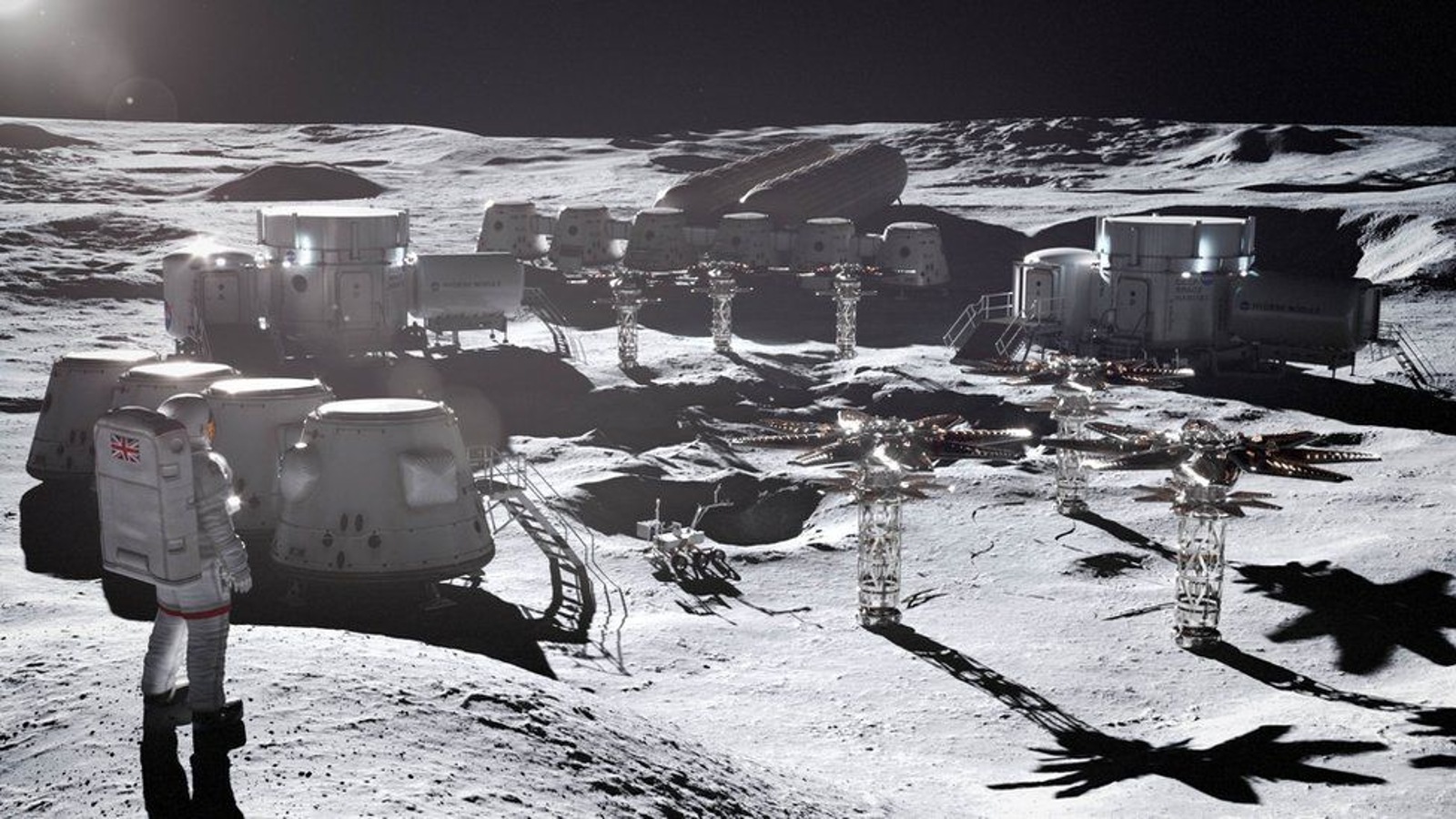New poppy seed-sized fuel pellets could power nuclear reactors on the moon
Scientists have developed a nuclear fuel source no larger than a seed, which NASA will test for use in future moon missions.
Scientists in the U.K. have created mini, seed-sized nuclear fuel cells that could power futuristic flower-shaped reactors on the moon as soon as 2030.
The tiny new fuel cells, developed by researchers at the Nuclear Futures Institute at Bangor University in Wales, are roughly the size of poppy seeds, which are around 0.04 inch (1 millimeter) across. The mini pellets are a type of tri-structural isotropic particle (TRISO) fuel, which is made from uranium, carbon and oxygen surrounded by a hard, ceramic-like shell. The cells are much more durable and efficient than traditional nuclear fuels, which makes them perfect for space exploration.
The fuel cells are designed to power the Space Flower Moon Micro Reactor, a conceptual car-sized fusion reactor designed by Rolls-Royce. Funding for the reactor was secured in early March, and the design is a leading candidate to power future moon bases as a part of NASA's Artemis program, which aims to establish a permanent base on the moon by 2030. Researchers think one of the durable pellets could power a single reactor for up to 15 years.
The fuel cells have now been sent to NASA for testing, which will simulate how the nuclear pellets deal with the simulated forces of a rocket launch and whether they are as efficient as the researchers claim, according to the BBC.
Related: How long would it take to walk around the moon?
Reliable power sources will be crucial for future moon bases because solar power cannot be relied upon at night, when temperatures plummet below minus 200 degrees Fahrenheit (minus 129 degrees Celsius) and vast amounts of energy will be needed to heat living quarters and vital infrastructure.
"On the moon and on planetary bodies that have day and night, we can no longer rely on the Sun for energy and therefore must design systems such as the small micro-reactor to sustain life," project researcher Simon Middleburgh, a nuclear materials expert at Bangor University, said in a statement.
Get the world’s most fascinating discoveries delivered straight to your inbox.
Nuclear reactors are the only current viable option for creating a reliable power source on such a short timescale, Middleburgh said. However, "the fuel must be extremely robust and survive the forces of launch and then be dependable for many years," he added.
The shells of TRISO fuels withstand corrosion, oxidation and high temperatures, and prevent radiation from leaking from the fuel, all of which may arise in space, according to the U.S. Department of Energy.
In addition to being robust enough to survive the journey to the moon, a main attraction of TRISO fuels is that they are extremely small, which makes them much more cost-effective to launch into space.
Although the mini reactor is designed primarily for space exploration, it could also provide a temporary source of reliable energy in areas affected by natural disasters such as earthquakes, tsunamis and tropical storms, the researchers said.
NASA isn't the only entity with its eyes on the moon. On Aug. 23, India's Chandrayaan-3 spacecraft landed near the moon's south pole in search of resources for a future lunar base. And in 2021, China and Russia announced plans to develop a joint base on the moon, although this project has suffered a recent setback after Russia's Luna 25 lander crash-landed on the moon last month.

Harry is a U.K.-based senior staff writer at Live Science. He studied marine biology at the University of Exeter before training to become a journalist. He covers a wide range of topics including space exploration, planetary science, space weather, climate change, animal behavior and paleontology. His recent work on the solar maximum won "best space submission" at the 2024 Aerospace Media Awards and was shortlisted in the "top scoop" category at the NCTJ Awards for Excellence in 2023. He also writes Live Science's weekly Earth from space series.




